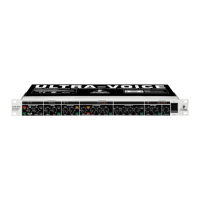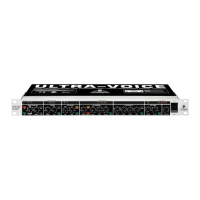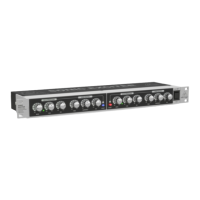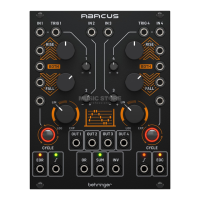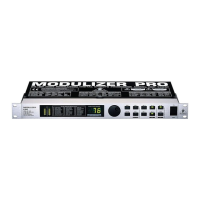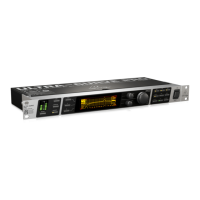13
E
Gated Reverb: Phil Collins song In the air tonight made this effect famous: a reverb is cut off
abruptly after a certain time. VARIATION determines the cutoff time, EDITA controls the reverb
intensity and EDITB the threshold above which reverb comes in (a kind of noise-gate before the
reverb signal input).
+ If used for rhythmical signals (snare) adjust the length so that the reverb is cut off just before
the next quarter note (e.g. bpm = 120, quarter note = 0.5 s, length less than 0.5 s).
Reverse Reverb: A reverb program with an inverted amplitude envelope, i.e. the effect starts softly
and then increases in volume. This effect used to be created by playing a tape in reverse direction,
recording the reverb signal, and then playing back the tape in forward direction again, with the result
that the reverb signal was played back before the actual input signal. VARIATION controls the length of
the signal, EDITA the delay, and EDITB the threshold above which the effect responds.
1.4.2 Special effects
Vocal Distortion: A clearly up-to-date program for lo-fi effects applied to vocals or drum loops, com-
bined with a delay. VARIATION determines the degree of distortion in 32 steps, EDITA controls the
delay from 0 to 200 ms. EDITB governs the delay mix. As a little extra the distortion circuit also
includes an LFO-controlled notch filter which audibly wanders back and forth with maximum distortion
(VARIATION 32).
Rotary Speaker: Simulation of the legendary rotary speaker effect produced by speakers rotating at
slow/fast speed within a bulky cabinet. The effect uses the physical principle known as Doppler effect.
VARIATION changes the frequency response (higher value = less high frequencies). Settings of 30 and
higher also simulate the tube distortion that was produced by the original cabinets in the 70s. EDITA
controls the speed of the horn-loaded speaker (treble range), EDITB that of the rotor (bass range).
Vocoder: Another all time favorite that has gained new popularity during the disco music renaissance of
the past few years (Around the World by Daft Punk or California by TuPac). Basically, a control signal
(usually vocals) in the right channel is used to modulate another signal in the left (e.g. synth sound),
which sounds as if the synth was talking (robot voice). VARIATION determines the type of vocoder,
EDITA the degree of distortion, and EDITB the effect sensitivity.
1.4.3 Modulation and pitch shifter effects
Pitch: This effect transposes the input signal either in cents (EDITA producing a light detune effect)
or semi-tones (EDITB up/down to one octave). Settings can be made independently for both chan-
nels, so as to create harmonies or simply to widen the sound of a single voice. The pitch effect can also
be used to produce a cartoon character type voice effect.
Flanger: An LFO constantly modulates the effect signals pitch by a few cents up and down. The LFO
speed is controlled by VARIATION, the amount of pitch modulation by EDITA, the portion of the effect
signal fed back to the effect block (=feedback) can be determined with EDITB. By the way, you can
separately control the channels modulation depth and feedback, which allows for highly complex
modulations. Flanger effects are primarily used for guitars, but there are also lots of other useful applica-
tions: voices, cymbals, bass, remixes, etc.
Chorus: Though similar to the flanger, chorus uses a delay function instead of feedback. Combined with
the pitch shifting feature, the delay produces a very pleasant detune effect. VARIATION changes the
modulation frequency, EDITA controls the delay and EDITB the modulation depth. Chorus effects are
used so often and in such a variety of applications that any recommendation would mean a limitation of
their use.
1. INTRODUCTION
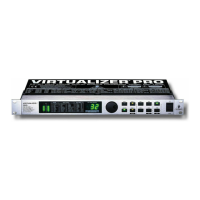
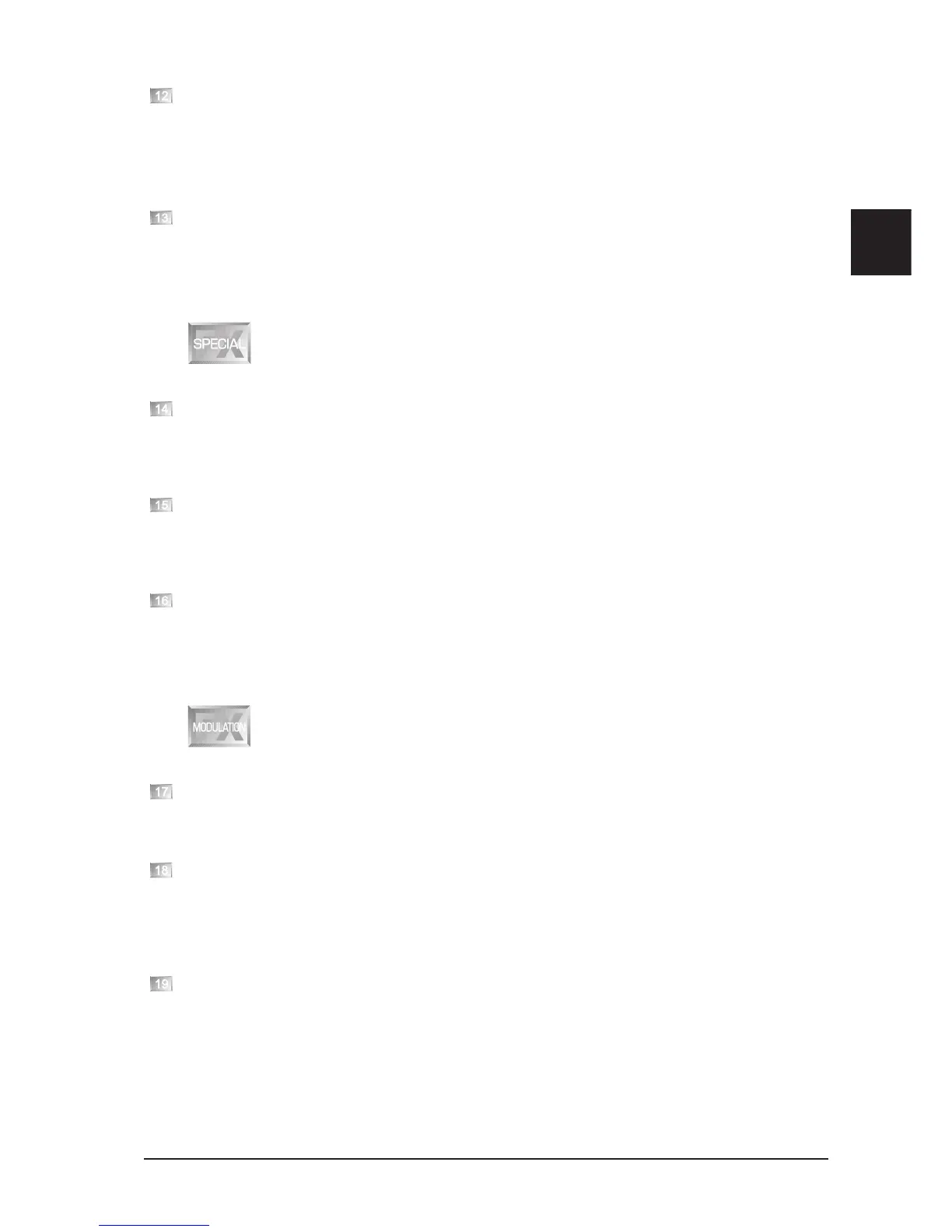